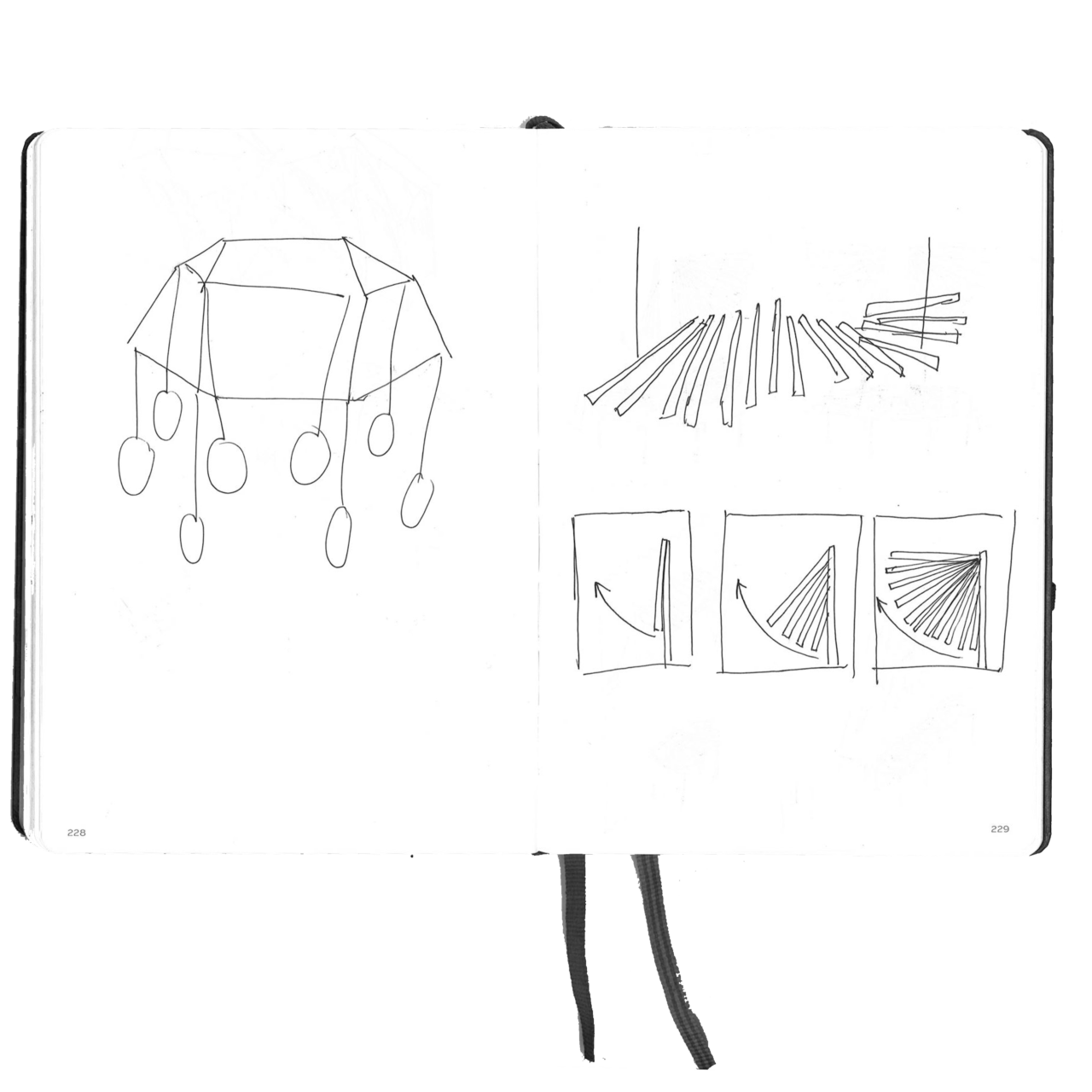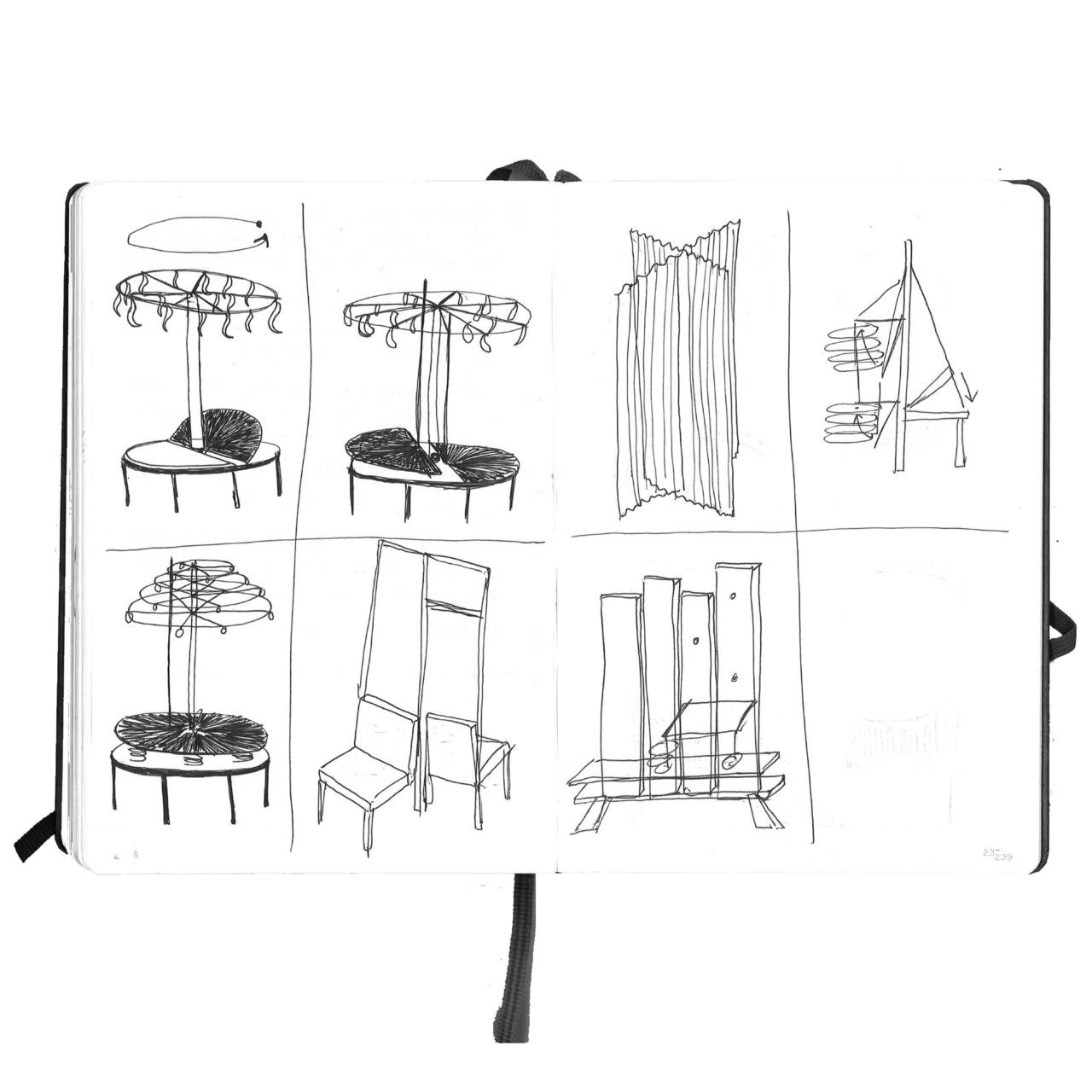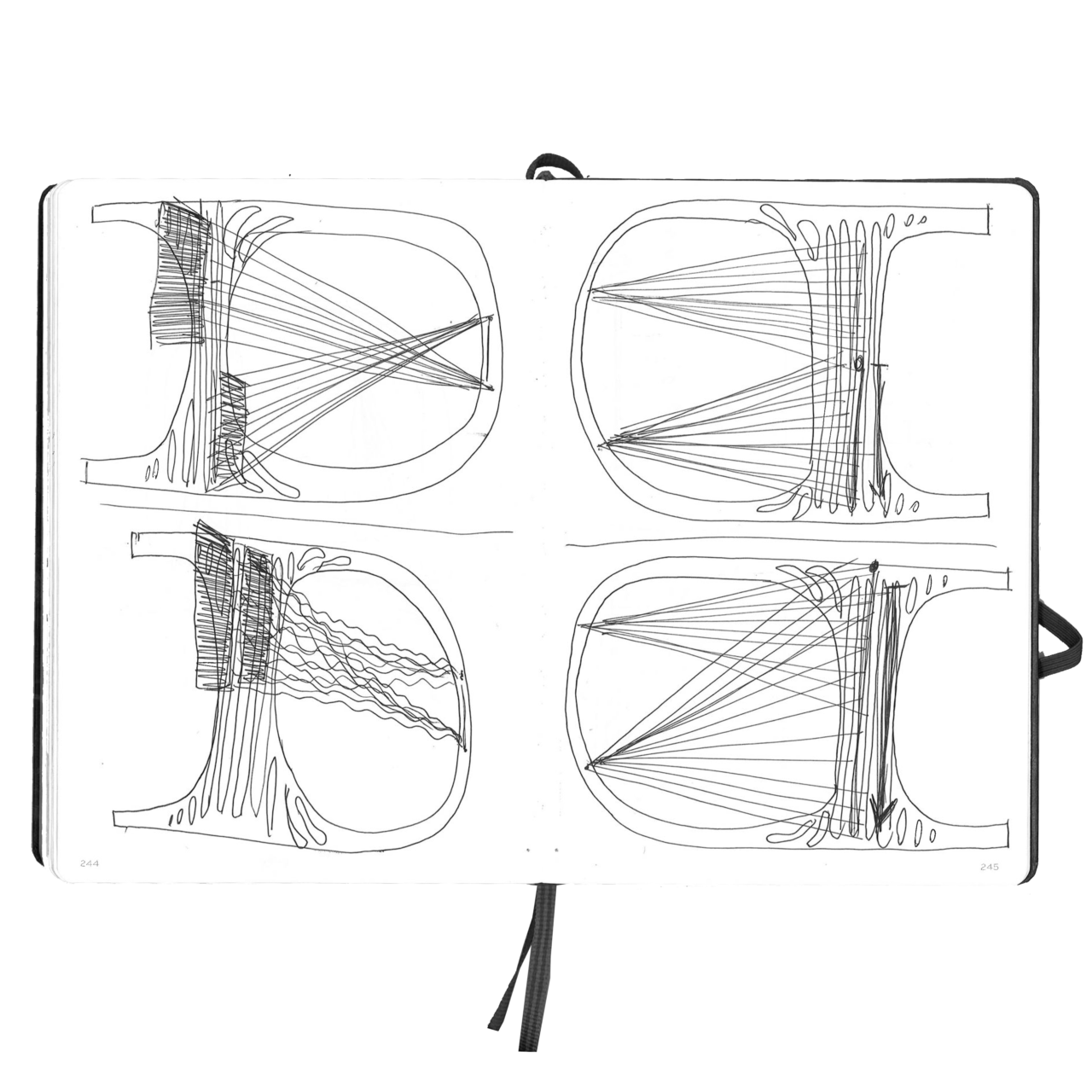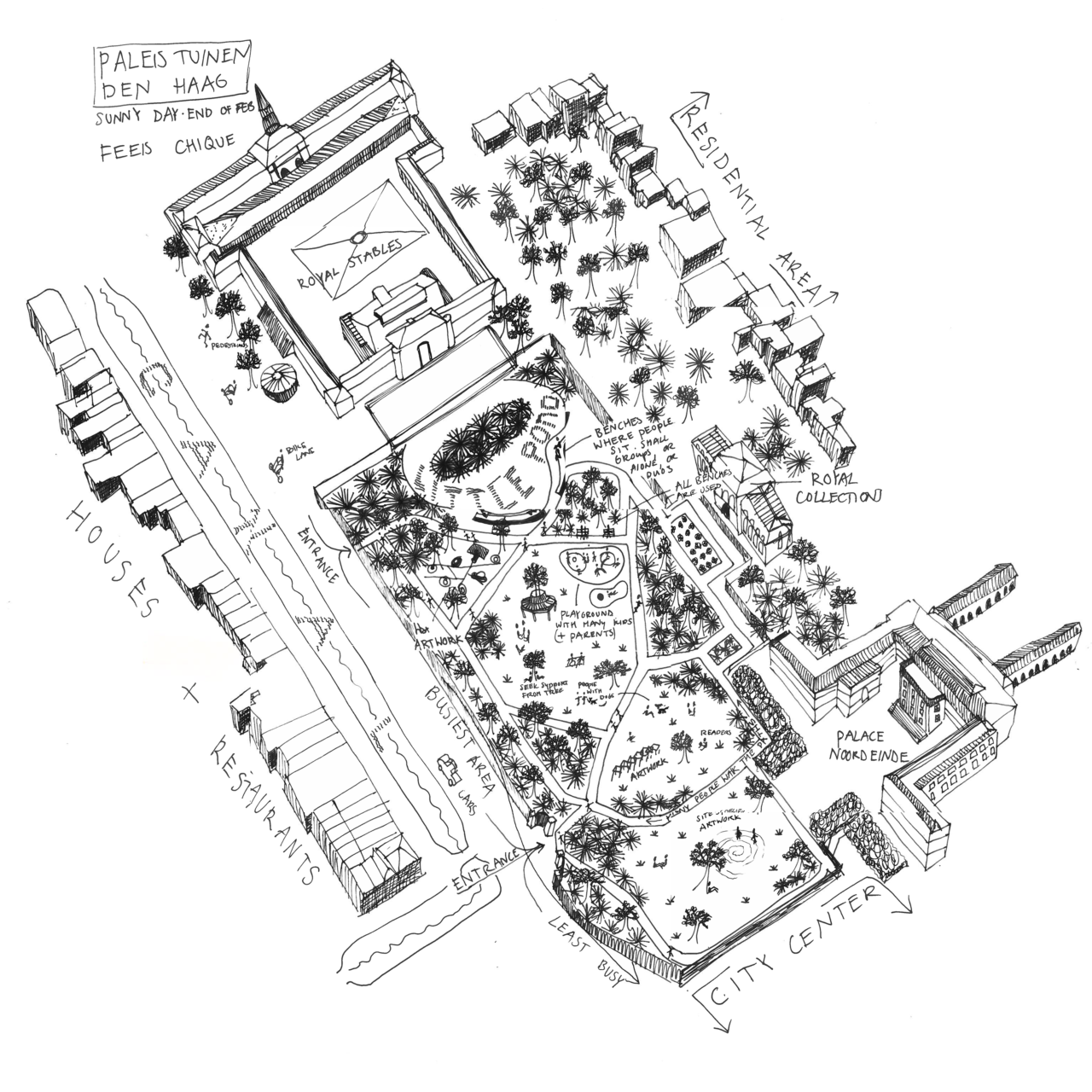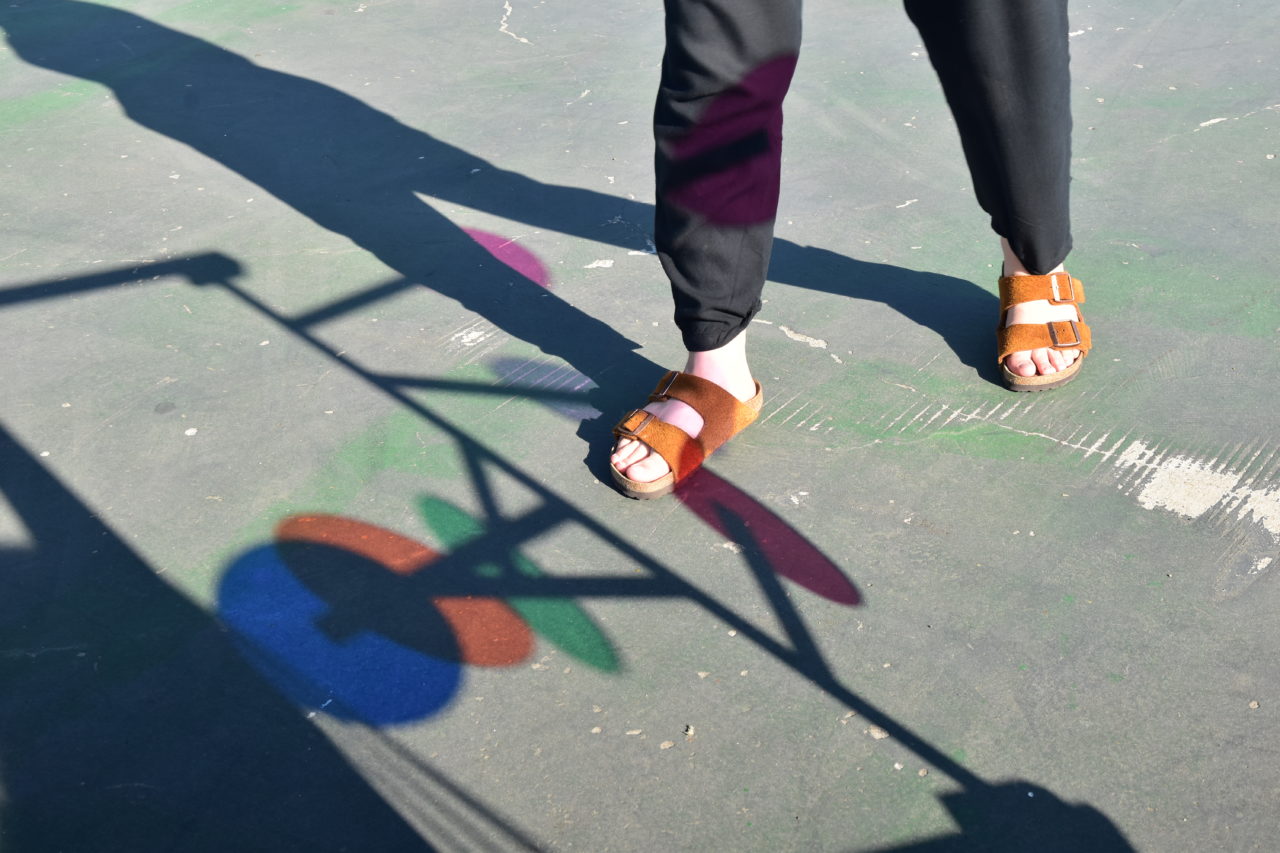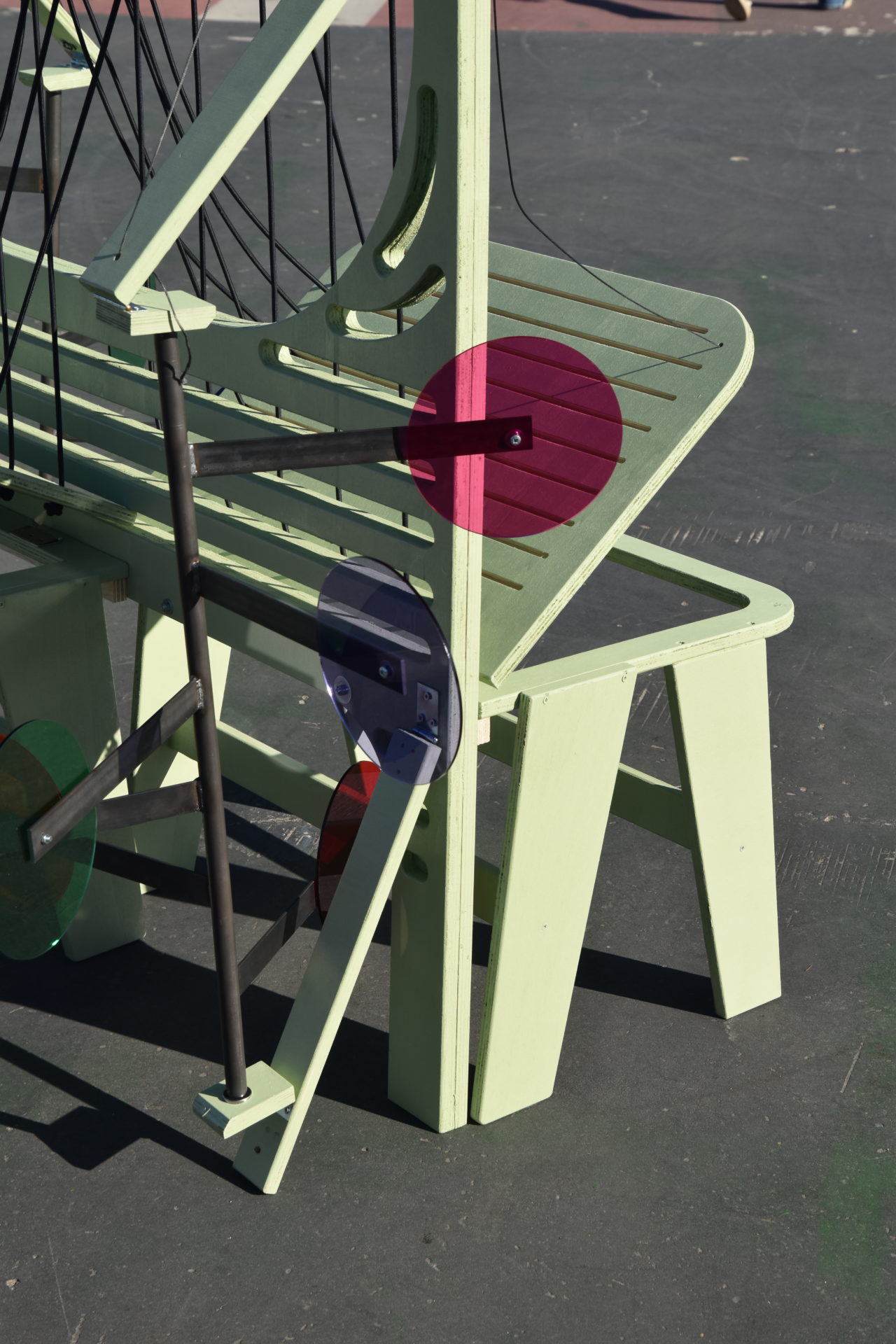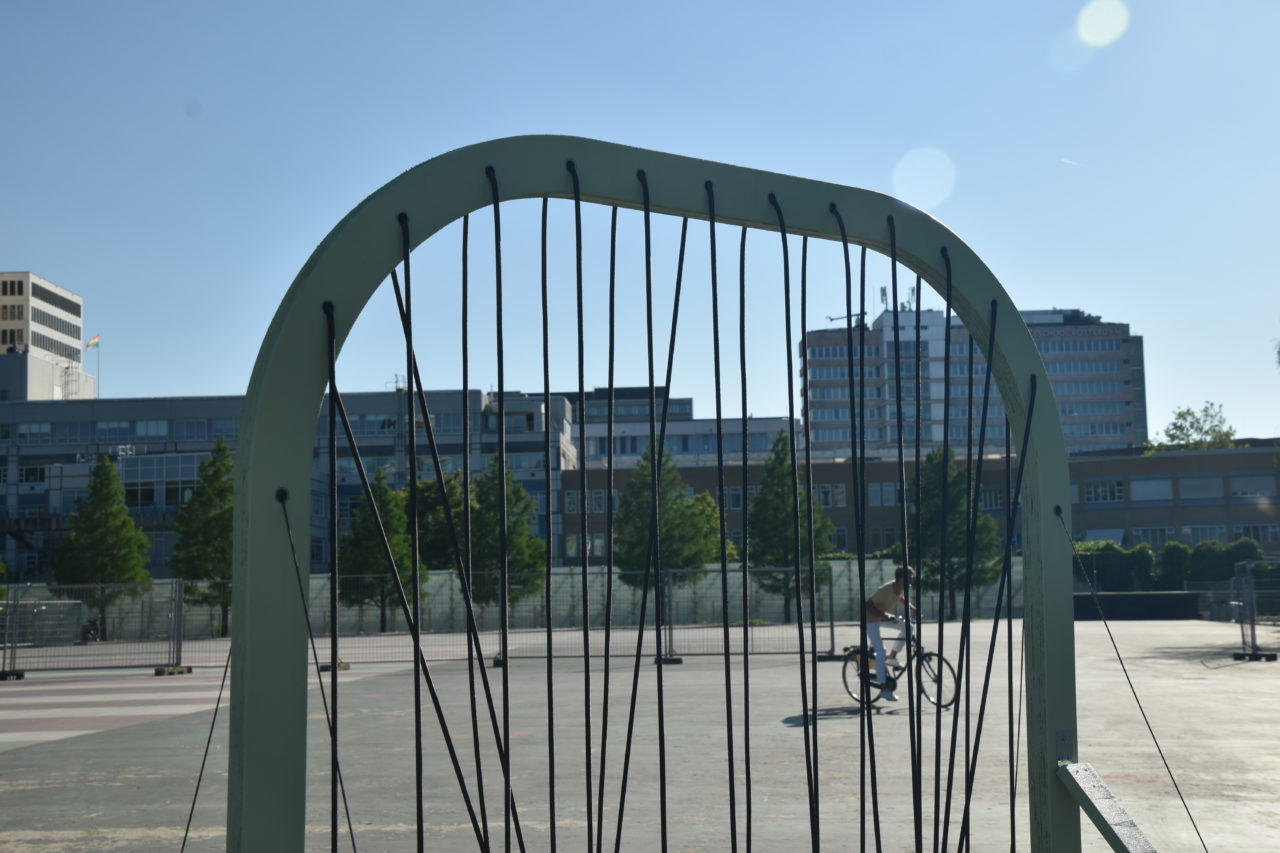Interlacing Strangers
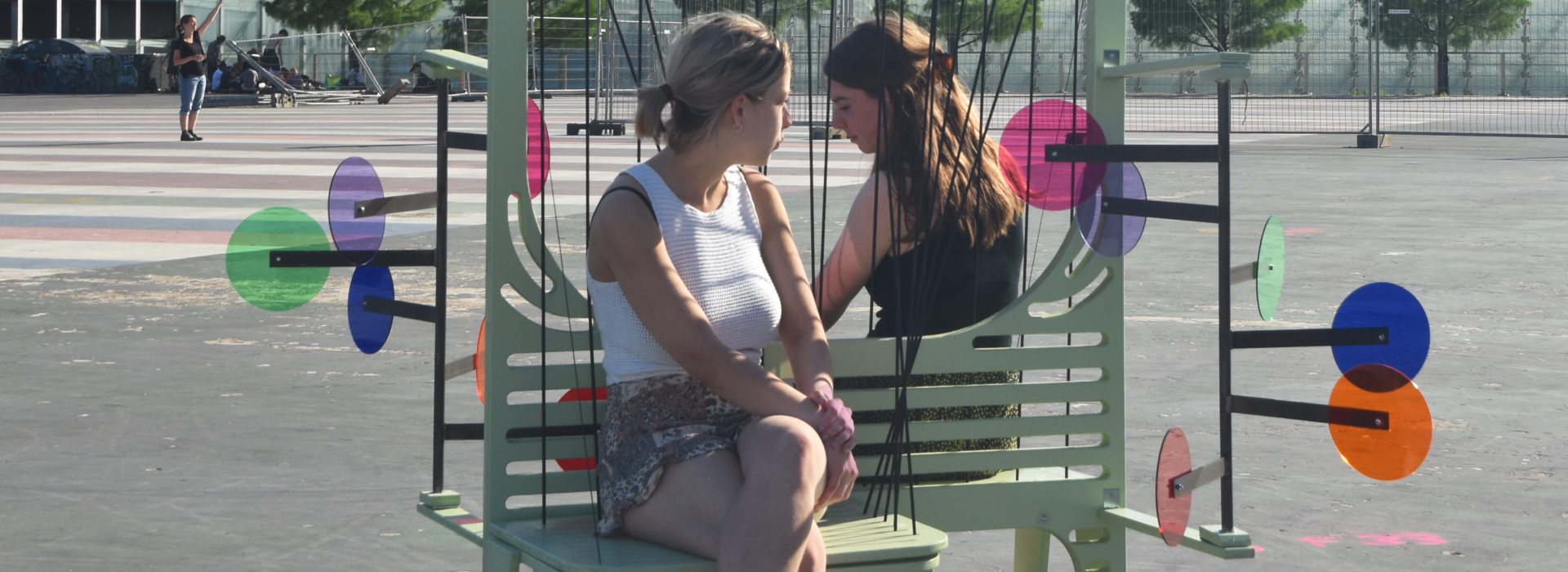
Project details
- Year
- 2022
- Programme
- spatial-design
- Practices
- social
- Minor
- Spaces of Display – TU Delft
How often do you interact with a stranger?
COVID-19 has significantly restricted to engage in connections with strangers. Now that we can spend time outside more safely again, we can explore the potential of public space. What can be done to increase the number of encounters with strangers?
Why an installation in public space?
Interventions in public space can facilitate serendipitous encounters. Public space has a big potential for strangers to meet. Most strangers will be found in diverse crowds. When doing research, it showed that the most practiced activity in public space is sitting. Even if there’s no direct sitting facility, people will find ways to sit. Therefore, applying the act of sitting in the design, lowers the bar for the actual use of the installation.
Light gets refracted by the acrylic glass. Patterns form on the ground. The spinning motion of the wind sculpture is matching the interdependency between humans. We are dependent on others to move forward, just like the sculpture needs the wind to get into motion. One cannot function without the other.
How does the installation work?
A person pulls the seat down to sit. One can sit on the spotting seats alone. If someone else decides to join on the other side, the wind sculpture on their own side lifts and starts spinning. Both people undergo the same experience at the same time. The art movement can only be experienced with the help of the other.

This bench is a prototype in a bigger research. It is a first model to figure out how to effectively connect strangers with strangers. The spotting seats are not about changing all of society. They are about providing subtle interactions.

